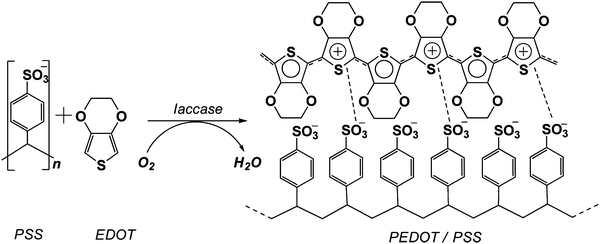Efficiency of a fungal laccase in 3,4-ethylenedioxythiophene polymerizationIrina S. Vasil’eva, Galina P. Shumakovich, Olga V. Morozova, Maria E. Khlupova, Roman B. Vasiliev, Elena A. Zaitseva, and Alexander I. Yaropolov Bach Institute of Biochemistry, Research Center of Biotechnology of the Russian Academy of Sciences, Moscow, Russia
E-mail: yaropolov@inbi.ras.ru Abstract: A high-redox potential laccase from fungus Trametes hirsuta was used as a biocatalyst to synthesize poly(3,4-ethylenedioxythiophene) (PEDOT), which is a promising material possessing both electronic and optical properties. This enzyme only requires molecular oxygen as an oxidant, which represents a great advantage for oxidative coupling reactions. The enzymatic oxidative polymerization of 3,4-ethylenedioxythiophene (EDOT) was performed using water-soluble sodium polystyrene sulfonate (PSS) as a template. The pH of the reaction medium and Zn2+ ions influenced the rate of EDOT polymerization. The water-dispersible PEDOT/PSS complex was characterized by UV–Vis and Fourier transformed infrared spectroscopy, as well as by transmission electron microscopy. Enzymatic EDOT polymerization was also carried out in the presence of PSS and multi-walled carbon nanotubes (MWCNT). The PEDOT/PSS/MWCNT composite had a conductivity of ca. 5.7 S/cm and specific electrochemical capacitance of ca. 246 F g−1, calculated from cyclic voltammograms at a potential scan rate of 5 mV s−1. Keywords: Enzymatic template polymerization ; Laccase ; Poly(3,4-ethylenedioxythiophene) ; Composite ; Multi-walled carbon nanotubes Full paper is available at www.springerlink.com. DOI: 10.1007/s11696-018-0396-8
Chemical Papers 72 (6) 1499–1505 (2018) |
Sunday, November 24, 2024 |
|||
© 2024 Chemical Papers |
||||






